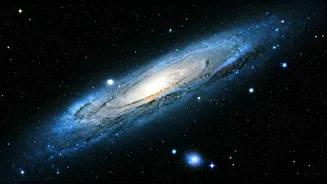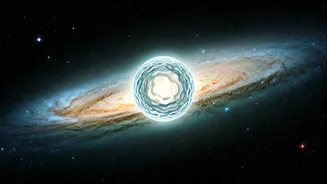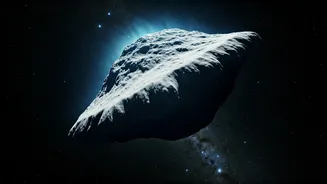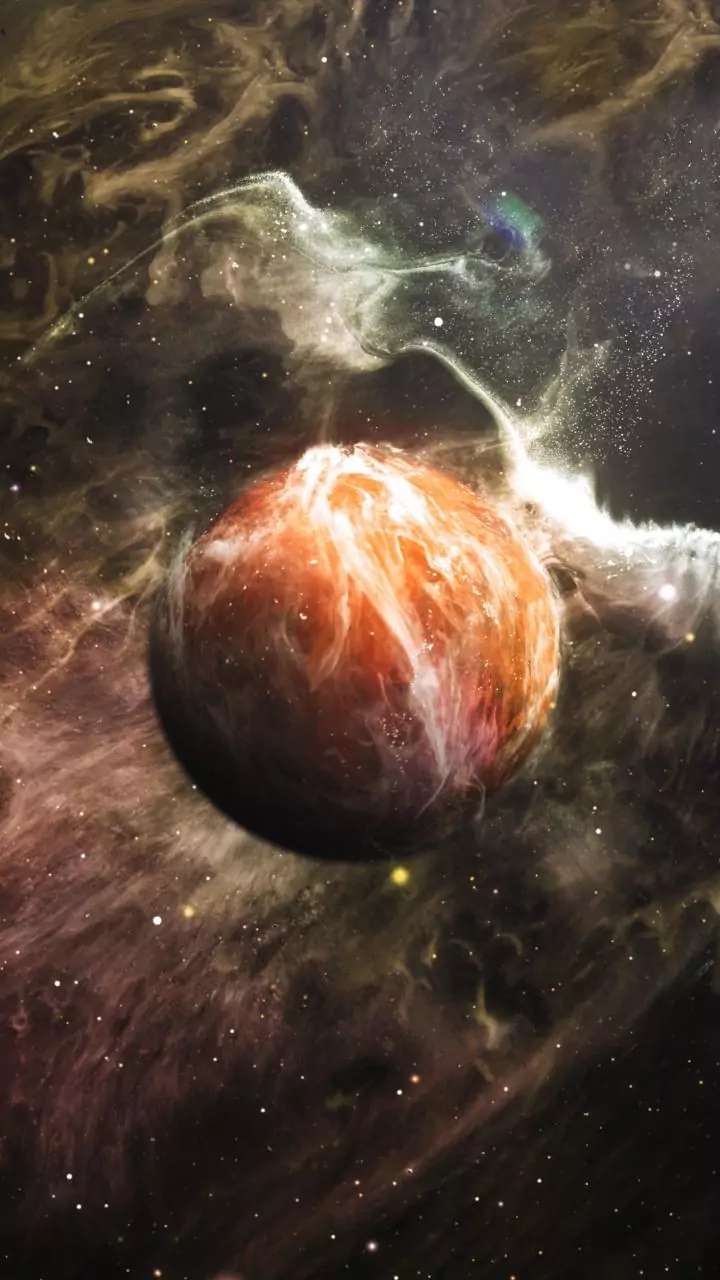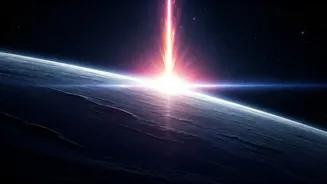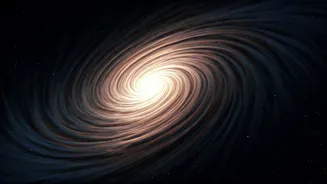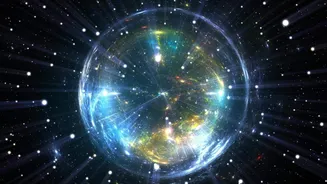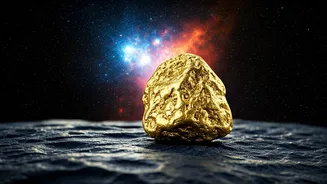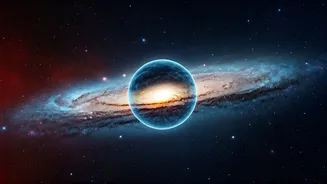Unveiling Ancient Light
The exploration of the early universe has always been a daunting challenge for astronomers, and the quest to understand the formation of the first stars
has been particularly difficult. The James Webb Space Telescope (JWST), with its unprecedented infrared vision, has revolutionized this field. Scientists focused their efforts on identifying these primordial stars, seeking to overcome the cosmic veil of time. Using the JWST, researchers have observed a potential Population III star system, called LAP1-B, located approximately 13 billion light-years from Earth. This system is so distant that the light reaching us has traveled for nearly the entire age of the universe. This allows us to observe it as it appeared very early in cosmic history, offering a rare opportunity to study the first stars in detail and gain invaluable insights into the initial stages of the universe. The JWST's capacity to pierce through cosmic dust and detect faint light sources is crucial in this endeavor, enabling astronomers to glimpse the universe's formative years.
Distant Celestial Body
The discovery of LAP1-B is a remarkable feat of astronomical observation, made possible through the collaboration of sophisticated instruments and innovative techniques. Located a staggering 13 billion light-years away, LAP1-B is a critical target because of its potential to host the universe's earliest stars. The LAP1-B system, considered a possible home to Population III stars, which are the first generation of stars formed after the Big Bang, has been observed in detail. These ancient stars are expected to have been formed primarily from hydrogen and helium, without the heavier elements that are common in later stellar generations. The study of Population III stars helps scientists comprehend the initial conditions of the universe, the processes that triggered the formation of the first stars, and the subsequent enrichment of the cosmos with heavier elements through stellar nucleosynthesis and supernovae. LAP1-B's position at such a vast distance makes it an extremely valuable object for investigating these phenomena, representing one of the best opportunities to study the first stars directly.
Gravitational Lensing Aid
The exceptional distance of LAP1-B presents a significant challenge: its light is extremely faint and difficult to detect. This is where gravitational lensing comes to the rescue. This phenomenon, predicted by Einstein's theory of general relativity, is used by astronomers to greatly enhance the visibility of distant objects. Gravitational lensing occurs when a massive object, such as a galaxy cluster, bends and magnifies the light from objects that are behind it. In the case of LAP1-B, astronomers used the gravitational lensing effect of the galaxy cluster MACS J0416. This cluster acts as a cosmic magnifying glass, amplifying the light from LAP1-B and enabling the JWST to capture detailed images. The precision of JWST, coupled with the natural magnification provided by gravitational lensing, allowed researchers to gather enough light from the faint star system to perform detailed analyses. This technique has been instrumental in exploring the early universe, allowing scientists to study objects and phenomena that would otherwise be beyond their detection capabilities. The utilization of gravitational lensing demonstrates a creative approach to overcome the limitations of distance and light intensity in astronomical studies.
Cosmic Mystery Solved
The discovery has great implications for our understanding of the universe. The potential identification of a Population III star system like LAP1-B allows scientists to explore the initial conditions of the cosmos, the formation of the first stars, and the subsequent chemical enrichment of the universe. Studying these ancient stars helps in understanding the processes that governed the evolution of galaxies and the elements that make up everything around us. Moreover, the confirmation of such a distant system supports the accuracy of current cosmological models and provides data to improve them. This research offers a window into the universe's past, providing crucial clues about the formation of the first galaxies and how the first stars influenced the formation of all subsequent stars. By analyzing the light from LAP1-B, astronomers are able to deduce the composition, temperature, and other characteristics of these ancient stars. This provides important insights into the universe's history and its future evolution.
